
Head honcho of Ground Up, Simon Panton, explains how it all came to pass, and why graded lists are so important:
The Mission
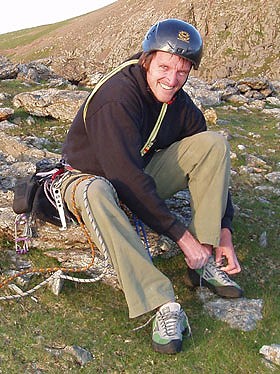
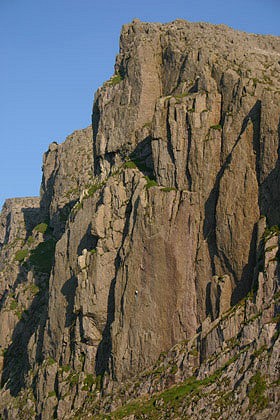

The Guide
Although the guide title is North Wales Rock I chose to concentrate on the northwest corner of Wales as this is where the highest concentration of classic routes can be found. I could have included the Clwyd Valley limestone or the Mid Wales crags down around Cadair Idris, but it would have been a very cumbersome book. As it stands you can reach all of the main crags (the Llanberis Pass, Cloggy, Lliwedd, Ogwen and the Carneddau, Tremadog and the Moelwyns, Gogarth, the Lleyn Peninsula and the Llandudno limestone crags) from the traditional climbing centre of Llanberis in less than an hour, and most are within 30 minutes drive.
The Graded List
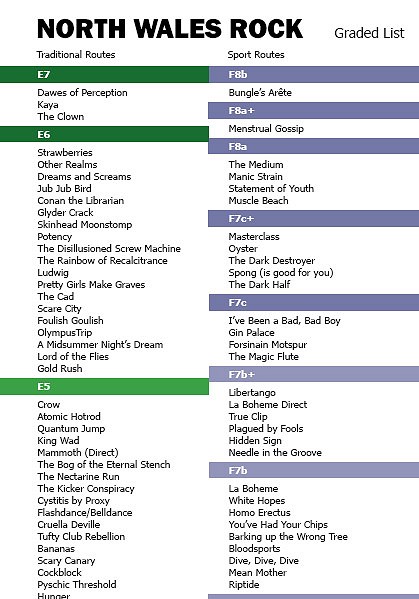
The North Wales Rock Challenge
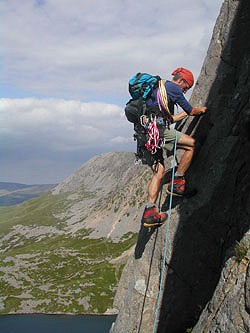
The North Wales Rock Challenge has 5 basic rules:
1. All single pitch routes must be lead, but alternate leads are acceptable on multi-pitch routes. 2. Ideally the ascent would be fall free, but failing that, an ascent is acceptable as long as you lower back to the belay or the deck and then do it cleanly. It's okay to fall off seconding. 3. Everybody is allowed to play a Joker card and pass on a single bogey route that they keep failing on. 4. Only routes given full written descriptions are in the list, i.e. you don't have to do Indian Face just because it's drawn on the East Buttress topo! 5. The judge's decision is final (i.e. if your witnesses don't stand up to closer scrutiny, you'll be denied the glory, named and shamed and tarred and feathered etc). A challenge of this order deserves a suitably generous prize: the first person to complete the North Wales Rock Challenge before the next 'revamp' (as opposed to re-print) of the book will have the luxury of drowning themselves, and a friend in beer, beer, glorious beer. To this end Ground Up will sponsor a bar tab for one night in the Vaynol Arms in Nant Peris, for both the plucky leader, and whichever patient belayer they owe the most favours to.COMPETITION - Chance to win a copy of North Wales Rock
Ground Up have kindly set a competition for UKclimbing.com. Just answer the follwing five questions, email your answers to [email protected] and the first three people to answer correctly will get a copy each of North Wales Rock. 1. In the 1980s Phil Davidson appeared on a poster soloing a famous Welsh route. What was it and what year did he first solo it? 2. What year did Ron James first publish his groundbreaking selected guide, Rock Climbing in Wales? 3. What is the url for Mayfair Wall on the BMC Regional Access Database? 4. What grade did Peter Harding originally give his route Spectre on Clogwyn y Grochan? 5. Name either of the English/Welsh team that did the first ascent of what was subsequently named Katana on Holyhead Mountain? One now lives in France and the other is the new secretary of the BMC Wales/Cymru area committee.BUY THE GUIDEBOOK
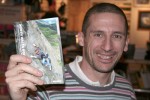








Comments